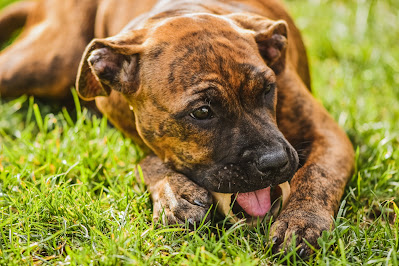How to Socialize a Shy Dog: A Complete Guide

Is your pup more of a wallflower than a party animal? Don’t worry. Socializing a shy dog is possible and can be a rewarding endeavor for both you and your pet. This is your go-to guide to helping your dog overcome shyness and fear.
Many pet owners face the challenge of a timid dog. Why does this happen? Dogs, like humans, have individual personalities. Some are outgoing, and some are reserved. It’s completely normal. But if you’re here, you want your pup to be more sociable and less anxious. And you’re in the right place.
We’ll explore proven strategies to help your furry friend become more confident in a variety of social settings. This won’t happen overnight. But with patience, consistency, and love, your shy dog can learn to enjoy social interactions.
Understanding Shyness in Dogs
When it comes to socializing a shy dog, it’s important to first understand the root causes of their shyness. Dogs, just like humans, can exhibit shyness for a variety of reasons. By recognizing the signs of shyness and understanding its possible causes, you can better support your furry friend in their socialization journey.
Signs of Shyness in Dogs
Shy dogs often display distinct behaviors that indicate their discomfort in social situations. These signs can vary from mild to severe and may include:
- Withdrawal or hiding when approached by unfamiliar people or animals
- Tail tucking or lowered body posture, indicating fear or anxiety
- Avoidance of eye contact or turning away from stimuli
- Trembling or shaking in response to new or unfamiliar environments
- Excessive panting, drooling, or yawning as signs of stress
Recognizing these signs will help you identify if your dog is experiencing shyness and allow you to provide them with the necessary support.
Possible Causes of Shyness in Dogs
Shyness in dogs can stem from various factors, including genetics, a lack of early socialization, traumatic experiences, or a combination of these. Understanding the potential causes can help you tailor your approach to socializing your shy dog:
- Genetics: Some dog breeds are inherently predisposed to shyness due to their genetic makeup. This genetic influence can make them more prone to anxiety and nervousness in social situations.
- Lack of Early Socialization: Proper socialization during a dog’s early developmental stages is crucial. If a dog does not receive adequate exposure to various people, animals, and environments during this critical period, they may develop shyness or fear towards new experiences.
- Traumatic Experiences: Dogs that have experienced traumatic events, such as abuse or neglect, may develop shyness as a defense mechanism. These negative experiences can impact their trust in humans or other animals, leading to apprehensive behavior.
By considering these possible causes, you can gain insight into your dog’s shyness and tailor your socialization efforts accordingly.
Creating a Safe and Comfortable Environment
When socializing a shy dog, it’s important to create a safe and comfortable environment that encourages positive interactions. By providing a quiet space, establishing a routine, and using positive reinforcement, you can help your shy dog gradually overcome their fears and build confidence. Read on to discover how these three strategies can make a significant difference in your dog’s socialization journey.
Provide a Quiet Space
Creating a quiet space for your shy dog is essential to help them feel secure and relaxed. Designate a specific area in your home where your dog can retreat to when they need some alone time. This space should be free from loud noises, distractions, and unfamiliar people or animals. Equip the area with comfortable bedding, toys, and water to ensure your dog feels safe and protected.
Establish a Routine
Dogs thrive on routine, and establishing a consistent daily schedule can help alleviate anxiety and provide a sense of stability for your shy dog. Set regular times for meals, walks, and play sessions, and stick to them as much as possible. By following a predictable routine, your dog will start to feel more at ease, knowing what to expect and when. This can significantly reduce stress and contribute to their overall well-being.
Use Positive Reinforcement
Positive reinforcement is a powerful tool when it comes to socializing a shy dog. Rewarding your dog with treats, praise, or playtime whenever they display confident and social behaviors will reinforce their positive experiences. Start with small steps, such as rewarding your dog for approaching new people or calmly interacting with other dogs. Gradually increase the difficulty level over time, always making sure to reward any progress your dog makes. This positive association will help your shy dog associate social interactions with positive outcomes, building their confidence and encouraging further socialization.
Gradual Exposure to New Experiences
Socializing a shy dog requires patience, understanding, and a gradual approach. By gradually exposing your dog to new experiences, you can help them build confidence and overcome their shyness. Here are some effective strategies to consider:
Start with Familiar Faces
Begin by introducing your shy dog to people they are already familiar with, such as family members or close friends. These familiar faces can provide a sense of security and comfort, allowing your dog to slowly adjust to social interactions. Encourage these individuals to interact with your dog in a calm and gentle manner, respecting their boundaries.
Introduce New People Slowly
Once your dog becomes more comfortable with familiar faces, gradually introduce them to new people. Start with one person at a time in a controlled environment, such as your home or a quiet park. Allow your dog to approach the new person at their own pace, without any pressure or force. It’s important to let your dog set the pace for socialization and not to rush the process.
Positive Associations with New Experiences
Make sure to create positive associations for your shy dog with new experiences. Reward your dog with treats, praise, or playtime whenever they show curiosity or interact positively with new people. This positive reinforcement helps your dog associate social interactions with pleasant outcomes, encouraging them to be more open and confident in the future.

Socialization with Other Dogs
When it comes to socializing a shy dog, interactions with other dogs play a crucial role in building confidence and developing social skills. In this section, we will explore three effective methods for socializing your furry friend with other dogs: controlled interactions, dog parks and playgroups, and professional training classes.
Controlled Interactions
One way to gradually introduce your shy dog to other dogs is through controlled interactions. Start by arranging playdates with calm and friendly dogs in a quiet and familiar environment, such as your backyard or a neutral territory. Keep the initial sessions short and closely supervise the interaction, ensuring that both dogs feel comfortable and safe. Gradually increase the duration and complexity of the interactions as your dog becomes more confident.
Dog Parks and Playgroups
Dog parks and playgroups can provide valuable opportunities for your shy dog to socialize with a variety of canine companions. Before bringing your dog to a dog park, make sure it is well-socialized with a few individual dogs to prevent overwhelming situations. Once at the park, observe your dog’s behavior closely and intervene if necessary. If your dog shows signs of anxiety or discomfort, it may be helpful to start with smaller playgroups or arrange playdates with dogs of similar temperaments.
Professional Training Classes
Enrolling your shy dog in professional training classes specifically designed for socialization can be highly beneficial. These classes are led by experienced trainers who understand the unique challenges faced by shy dogs. In a controlled and structured environment, your dog will have the opportunity to interact with other dogs under the guidance of professionals. Through positive reinforcement techniques and gradual exposure, your dog can learn to overcome fear and develop positive associations with other dogs.
Building Confidence through Training
Training is a powerful tool when it comes to socializing a shy dog. By providing structure, guidance, and positive reinforcement, you can help your furry friends build confidence and overcome their shyness. In this section, we will explore three key areas of training that can contribute to your dog’s self-assurance: Basic Obedience Training, Trick Training and Games, and Agility or Nose Work.
Basic Obedience Training
Basic obedience training lays the foundation for your dog’s overall behavior and sets them up for success in various social situations. Teaching commands such as sit, stay, come, and heel not only establishes boundaries but also instills a sense of accomplishment in your shy dog. Consistency, positive reinforcement, and patience are key when practicing basic obedience training. By mastering these fundamental commands, your dog will gain confidence in their ability to understand and respond to you.
Trick Training and Games
Trick training and games provide a fun and interactive way to boost your dog’s confidence. Teaching your shy dog new tricks, such as giving a paw, rolling over, or playing dead, not only engages their mind but also builds their confidence as they learn and perform these tasks. Additionally, incorporating interactive games like hide-and-seek or puzzle toys can encourage your dog to explore its environment and overcome their shyness in a playful manner. Remember to reward their efforts and celebrate their achievements during these training sessions.
Agility or Nose Work
Engaging your shy dog in activities like agility or nose work can have a profound impact on their confidence. Agility training involves navigating through obstacle courses, which challenge your dog both physically and mentally. As they conquer each obstacle, their self-assurance grows. Similarly, nose work taps into your dog’s natural scenting abilities, allowing them to search for hidden objects or scents. This activity not only boosts their confidence but also channels their energy into a productive and rewarding task. Both agility and nose work provide an outlet for your shy dog to showcase their abilities and build their self-esteem.
Patience and Consistency
When it comes to socializing a shy dog, patience and consistency are key. By providing a calm and supportive environment, you can help your furry friend overcome their shyness and build confidence. In this section, we will explore three important aspects of socialization: avoiding forcing interaction, maintaining a consistent approach, and celebrating small victories.
Avoid Forcing Interaction
One of the most important things to remember when socializing a shy dog is to avoid forcing interaction. Pushing your furry friend into uncomfortable situations can cause more harm than good. Instead, allow them to approach new people and dogs at their own pace. Encourage positive experiences by using treats or toys as rewards when they approach or show interest in others.
Maintain a Consistent Approach
Consistency is key when socializing a shy dog. Establish a routine that includes regular socialization activities, such as short walks in quiet areas or supervised playdates with well-behaved dogs. By exposing your dog to controlled social situations on a consistent basis, they will gradually become more comfortable and confident. Remember to always remain calm and patient during these interactions, as your dog will pick up on your energy.
Celebrate Small Victories
Every small step forward deserves celebration. When your shy dog makes progress in socializing, no matter how small, acknowledge and reward their achievements. This could be as simple as giving them verbal praise, a gentle pat on the head, or an extra special treat. By celebrating these small victories, you are reinforcing positive behaviors and encouraging your dog to continue their socialization journey.
Conclusion
In conclusion, socializing a shy dog may seem like a challenging task, but with patience, consistency, and positive reinforcement, it is possible to help your furry friend come out of their shell. Start by gradually exposing them to new experiences, people, and other dogs in a controlled and safe environment. Use treats, praise, and rewards to encourage and reinforce their positive behavior. Remember to take it slow and respect your dog’s comfort zone, allowing them to set the pace. With time and dedication, your shy dog can become more confident and enjoy a happy, social life.
FAQ
Are you wondering how to socialize your shy dog? In this section, we’ll address some frequently asked questions to help you navigate the process and ensure a positive experience for both you and your furry friend.
Why is socializing a shy dog important?
Socializing a shy dog is crucial for their overall well-being and happiness. Just like humans, dogs are social creatures who thrive on positive interactions. By exposing your shy dog to different people, animals, and environments, you can help them build confidence, reduce anxiety, and develop important social skills.
How do I start socializing my shy dog?
When starting the socialization process with a shy dog, it’s essential to take it slow and be patient. Begin by introducing your dog to calm and familiar settings, such as your home or a quiet park. Gradually expose them to new experiences, people, and other animals, always ensuring positive and rewarding interactions.
Using treats or toys as positive reinforcements can help your shy dog associate socialization with pleasure and reward. Remember to praise and reward your dog for any progress they make, no matter how small.
What if my shy dog displays fear or aggression during socialization?
If your shy dog displays fear or aggression during socialization, it’s essential to approach the situation with caution and seek professional guidance. Understanding your dog’s body language and recognizing its limits are crucial to preventing any negative experiences.
If you notice signs of fear or aggression, such as growling, barking, or hiding, it’s best to remove your dog from the situation and consult a qualified dog trainer or behaviorist. They can provide expert advice and develop a tailored socialization plan that suits your dog’s specific needs.
Can I socialize my shy dog at home?
Absolutely! Socializing your shy dog at home is a great way to build their confidence in a safe and familiar environment. You can invite friends or family members over, ensuring they are calm and understanding of your dog’s needs.
Set up positive experiences by engaging in fun activities together, such as playing games or training sessions. Gradually introduce your dog to new experiences at home, like different sounds or objects, to help them become more comfortable and adaptable.







